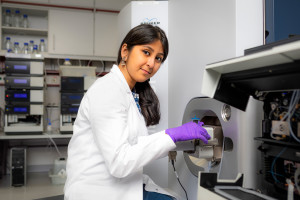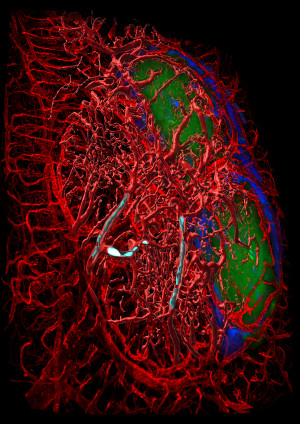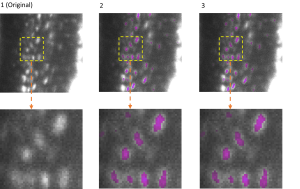Würzburg/Dortmund, 18th November 2021
When the heart is subjected to increased stress, for example through sport or high blood pressure, it grows. In this way, it tries to keep its performance constant even under higher strain. In fact, this growth can improve the heart's performance to a certain extent. However, if the growth stops, heart muscle cells die and the heart becomes scarred and weaker. This can result in chronic heart failure.
However, a peptide agent can experimentally inhibit this damaging process. This has been shown by an interdisciplinary team from the Julius Maximilians University of Würzburg (JMU) and the Leibniz Institute for Analytical Sciences - ISAS e.V. in Dortmund, led by Professor Kristina Lorenz (Nature Communications, 2020).

Würzburg professor Kristina Lorenz with the three other recipients of the 2021 Phoenix Pharmacy Science Award.
© PHOENIX group
Harmful protein effect is reversed
For this achievement, Kristina Lorenz, who heads the JMU Chair of Pharmacology and Toxicology as well as the research department Translational Research at ISAS, has now been awarded the 10,000 euro Phoenix Pharmacy Science Prize in the "Pharmacology and Clinical Pharmacy" category. Due to the pandemic, the prize was presented to her in a small setting at the department.
Jury member Professor Peter Ruth explains the award as follows: "The prize-worthiness of this research lies in the fact that Professor Lorenz was able to override the pathological effect of a signaling protein with a peptide agent." The protein exerts its harmful effect in patients with high blood pressure or after a heart attack.
The award winner is continuing to advance her research on the peptide compound with her teams in Würzburg and Dortmund: "We hope that we can use this finding to lay the foundation for a new therapy for heart failure that has fewer side effects." In addition, there are indications that the peptide may also be able to be used to treat tumour diseases and certain genetic diseases, according to Lorenz.
Facts about the award
The Phoenix Pharmaceutical Science Prize was established in 1996 with the aim of promoting innovative and outstanding research in the pharmaceutical field. The prize is awarded by the PHOENIX group, a pharmaceutical wholesale company.
More information about the four researchers honoured with the Pharmaceutical Science Award is available on the PHOENIX group website. A video of the award ceremony is also available there. (https://www.phoenixgroup.eu/de/wissenschaftspreis)
The award-winning publication
Interference with ERK-dimerization at the nucleocytosolic interface targets pathological ERK1/2 signaling without cardiotoxic side-effects, Nature Communications 11, 1733 (2020); DOI: 10.1038/s41467-020-15505-4





